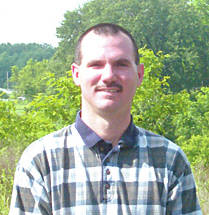The Cardinal Center Campground and Shooting Center in Marengo will now open their rifle and pistol ranges to the public four days a week, according to the Ohio Department of Natural Resources. The Cardinal Center has entered into an agreement and is partnering with the ODNR Division of Wildlife to provide public shooting access while the Delaware Shooting Range is temporarily closed.
The Cardinal Center will now honor the ODNR Division of Wildlife’s one-day and annual shooting range permits for one hour, Thursday through Sunday, from 9 a.m. until dusk. Shooters who wish to continue shooting after their first hour each day may continue shooting at a rate of $20 per hour.
The Cardinal Center has ramped up expansion to help fill the shooting void that was created by the temporary closure of the Delaware Shooting Range. Under the five-year agreement, the Cardinal Center will maintain the ranges, provide annual reports of range usage and continue to promote shooting sports and shooting education for citizens of Ohio.
Visitors can purchase one of two permits to use at the range: a $24 annual shooting range permit or a $5 one-day shooting range permit at wildohio.gov or at any vendor that sells hunting and fishing licenses. The permits also allow the permit holder to access any of the ODNR Division of Wildlife’s Class “A” ranges throughout the year.
The Cardinal Center Campground and Shooting Center is located at 616 State Route 61 in Marengo, north of Columbus off I-71.
ODNR is committed to providing safe and quality shooting opportunities for Ohioans while remaining good stewards of the environment. Funding for this project and the ODNR shooting ranges returns to Ohio through the Federal Wildlife Restoration Act. Excise taxes are collected from the sale of firearms and ammunitions, and this funding is returned to the states for wildlife management and shooting range projects.
For more information about shooting ranges, visit wildohio.gov.
• Fisheries biologists from multiple agencies recently conducted a project on the Sandusky River to assess the ability to capture grass carp, according to the ODNR.
Crews from the ODNR Division of Wildlife worked with Michigan DNR, Department of Fisheries and Oceans Canada, U.S. Geological Survey, New York Department of Environmental Conservation and the University of Toledo for two days of sampling looking for grass carp, in conjunction with aquatic invasive species sampling in Sandusky Bay conducted by the U.S. Fish and Wildlife Service.
The crews sampled Aug. 29-30, which included the coordinated use of multiple electrofishing vessels, gill nets and fyke nets to collect adult and juvenile carp in the Sandusky River. Over the two days, eight fish were collected using the refined sampling techniques.
Although present in the system, grass carp populations are considered to be low, and this week’s action reinforces this conclusion.
This week’s testing of various sampling methods along with ongoing assessment has helped to identify alternative techniques to increase capture efficiencies for a planned, large-scale sampling event to be held in 2018. This is one part of a structured and measured approach to better understand and address grass carp in Lake Erie.
The increased knowledge of grass carp in western Lake Erie gained through this research allows natural resource agencies, working through the Great Lakes Fishery Commission, to collaboratively develop science-based management approaches and evaluate the effectiveness of different actions and strategies.
The grass carp is an invasive species in the Great Lakes region and is one of four species commonly identified as Asian carp. All species of Asian carp do not have the same negative ecological effects. Grass carp present significantly different risks to the Lake Erie ecosystem compared to the highly invasive bighead carp and silver carp.
An adult grass carp commonly weighs more than 20 pounds and can grow up to 48 inches in length. The fish are primarily herbivorous, consuming large quantities of aquatic vegetation, and they can affect fish communities primarily through habitat modification.
Grass carp were actively stocked in private ponds in many states as early as the 1970s, and some have escaped. Grass carp have been detected in Lake Erie since the mid-1980s. Recent efforts to collect fish have resulted in low catch rates, indicating that fish are present in low densities. Although there is currently no evidence of negative ecological impact to the Lake Erie ecosystem attributed to grass carp, this study furthers research on this topic and can also prove useful in providing methods to study other species.
Until next time, Good Hunting and Good Fishing!
.neFileBlock {
margin-bottom: 20px;
}
.neFileBlock p {
margin: 0px 0px 0px 0px;
}
.neFileBlock .neFile {
border-bottom: 1px dotted #aaa;
padding-bottom: 5px;
padding-top: 10px;
}
.neFileBlock .neCaption {
font-size: 85%;
}




